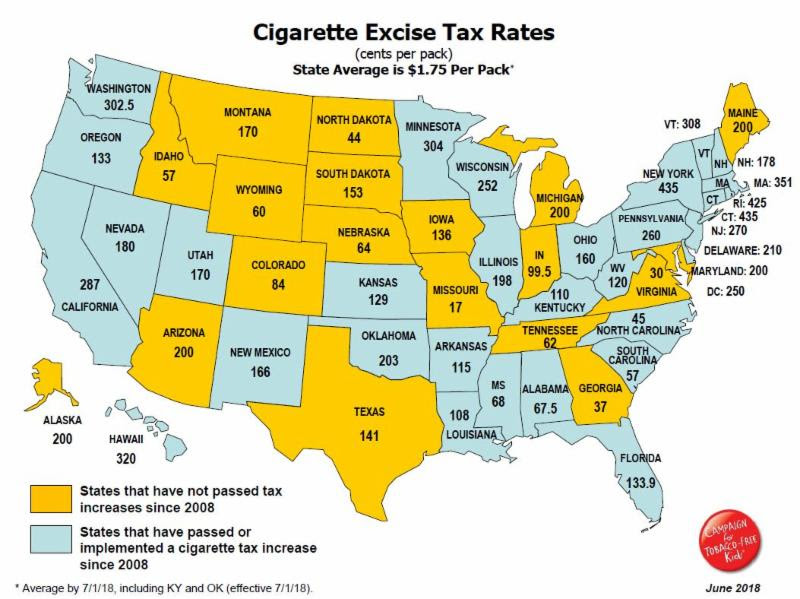A new infographic focused on youth tobacco use can now be found on the Tobacco Free Nebraska website. The graphic is intended to provide an overview of statewide youth tobacco data and provide talking points for partners and community members. The infographic can be found here.
According to new information released by the CDC, the 2017 NHIS found that 13.9 percent of U.S. adults were cigarette smokers in 2017, the lowest level ever recorded by this survey.
This projection represents a significant decline from the proportion of adults aged 18 and older who were current smokers in 2016. A series of data visualizations of this data can be found here.
Interested in becoming a leader for the Living Well or Living Well with Diabetes program? Classes will be held in Omaha on August 29, 30, September 5 and 6. More information can be found here.
The FDA’s Center for Tobacco Products has released a webinar entitled Tips for Retailers: Preventing Sales to Minors. The webinar provides an overview of the various resources available to retailers that may help prevent the sale of tobacco products to minors, focusing specifically on age verification, internal compliance checks, and recommended training practices. The webinar can be found here.
CDC has released new Tips from Former Smokers® smoke-free public housing resources to be used after the HUD smoke-free rule goes into effect. The flier above and multiple other resources from CDC, HUD and other partners can be found here.
Housing challenges contribute to inequitable health outcomes in communities every day through factors such as unaffordable housing, segregation based on race and income, poor-quality housing and housing instability.
ChangeLab Solutions’ BLOCK Project has developed a starter kit to help local institutions partner to improve these community health outcomes. Resources and more information available here.
According to an article published in the American Journal of Preventative Medicine, financially strained smokers made slightly more attempts to quit than non-strained smokers but were no more likely to successfully quit. Read more here.
Tiffany didn’t think about all the ways smoking hurt her daily life until she quit. Then life quickly started getting better. Food tasted better. She has more energy and more confidence. And there was one big surprise. In this video she says, “The money I save from not smoking is absolutely great!”
The American Lung Association (ALA) has published a comprehensive billing guide for stakeholders on tobacco screening cessation services. This document provides guidance on how to code for both diagnoses and services related to tobacco. The resource is available here.
According to data published in the Journal of Cancer Education, framing, a call for engagement and varying implied audience choice all play a key role in audience engagement with smoking cessation posts on social media. Read more here.

As of July 1, 2018, the state cigarette tax average is now at $1.75 per pack and thirty-six states now have a tax rate of $1.00 per pack or higher. More information resources and the fact sheets can be found here.
Employer quit-smoking incentives can be a great way to encourage an already motivated person to make the decision to quit tobacco, but what about those who aren’t ready? This article from The Ex Program examines some of these potential barriers. Read more here.
Updated resources available through American Nonsmokers’ Rights Foundation include:

In the June 22 Morbidity and Mortality Weekly Report, the CDC and the American Nonsmokers’ Rights Foundation examined data from ANRF’s College Campus Tobacco Policy Database and determined the number of U.S. colleges and universities with smoke-free policies has doubled since 2012. Tobacco-free campuses are important because nearly all adult smokers start before age 26. The full article can be found here.
Decades of the tobacco industry targeting U.S. military has helped create a culture of tobacco use among service members and driven smoking rates significantly higher that that of the general population.
Here are a few new resources that lay out what there is to know about tobacco use in the military.
A study published in the North Carolina Medical Journal examined the economic impact of the medical costs of secondhand smoke exposure in North Carolina. The study showed children to be the most commonly affected. Read more here.

Comments